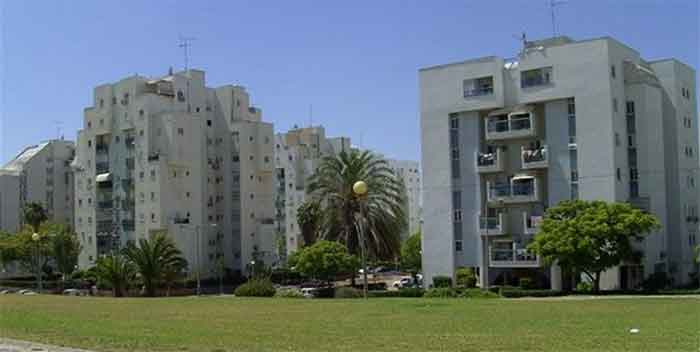The bold and suicidal actions by Gaza militants defy reason… to the reasonable. To those frustrated by decades of oppression, with no apparent means to alleviate the suffering, the actions become comprehensible.
Looking north from the Gaza border, the Gazan people can observe the horrific damage being inflicted on those who inflicted horrifying damage to them and their earlier relatives. Each day, the Palestinians reconstruct in their minds their ancient and satisfying village, al-Majdal, now called Ashkelon.
The modern Israeli city of Ashkelon, 20 kilometers north of the Gaza border, presents a picturesque setting along the Mediterranean coast.

Sparkling white beaches matched by white-faced apartment buildings, green lawns, and several wide boulevards depict a tranquil and content city. Ashkelon, the modern city with a biblical name, is not peaceful. Grad rockets from Gaza have struck the city on several occasions. By arguments of war, the damage has not been extensive, but no damage can be ignored.
More noticeable is that Ashkelon has an important story, relating a narrative that describes the Middle East conflict. The story begins with the Canaanites of 1800 B.C.
Ashkelon’s archaeological park has a treasure; a Canaanite gate from the walled city that gave the modern city its name. The Canaanites constructed a port on the Mediterranean Sea and used the sea, together with city walls, to provide a unique defense against invaders. The archaeological park contains artifacts from the Canaanite and succeeding civilizations; Philistines, Babylonians, Greeks, Romans, Persians, Arabs, and Crusaders, all of whom eventually ruled the area until the Mamelukes destroyed Ashkelon in the year 1270 A.D.
Missing from the list of conquerors of Ashkelon are the Israelites. No substantiated history or archaeological finds describe Israelite administration of the coastal areas. This lack of coastal identification is surprising because, if the biblical claims of the extent of David and Solomon’s realms are true, would not these empires include seaports and fortifications close to the defendable Mediterranean Sea? A Canaanite gate from 1800 B.C. is extant, but not a single identifiable structure from the reported eras of David and Solomon has been uncovered along the coast.
This brings us to the year 1596 A.D. In that year, the Arab village of al-Majdal in the Ottoman Empire, located close to the ruins of ancient Ashkelon, had a population of 559 inhabitants. An industrious village, known for a weaving industry that produced silk for festival dresses, Al-Majdal’s population grew to 11,000 by 1948. The poetic naming of their fabrics: ‘ji’nneh u nar’ – ‘heaven and hell’, ‘nasheq rohoh’ – ‘breath of the soul’ and ‘abu mitayn’ – ‘father of two hundred, signified the pride and originality of the Al-Majdal weavers.
Al-Majdal and its citizens suffered the fate of many Palestinian villages that hoped to escape the hostilities but became engulfed in the 1948-1949 war. Its residents sustained more than the usual injustices that were committed after the passage of United Nations (UN) General Assembly Resolution 181, the Partition Plan for Palestine.
Not well recognized is that the territory awarded to the Palestinians in Resolution 181 extended along the coast to present-day Ashdod, 38 kilometers above Gaza. Al-Majdal had been awarded to the new Palestinian state. Not sufficiently explored is the reason that the Egyptian army, after its entrance into the war, refrained from entering deeply into territory awarded to the Jewish state – its purpose was to defend the Palestinian state against Israeli transgression. Egypt’s army captured the Yad Mordechai kibbutz, eight kilometers south of Al-Majdal, and stopped at Ashdod. The army crossed the Negev (awarded to Israel) and attacked Jewish settlements in its advance. The Egyptian military proceeded to defend Beer Sheeva, which had also been awarded to a Palestinian state, and continued through Palestinian territory to safeguard Hebron and other parts of the new Palestine state. Egyptian military attacked Tel Aviv by air and sea, but the Egyptian army did not occupy territory awarded to Ben Gurion’s government. Reasons given for the Egyptian failure to seize territory awarded to Israel include (1) damage done to the Egyptian army in a battle at Ashdod halted its advance, (2) four Messerschmitt aircraft delivered by Czechoslovakia to Israel alarmed Egyptian soldiers, and (3) battles with Negev kibbutzim deterred the Egyptian army. All of these reasons are conjecture and not sufficiently convincing.
Despite the over-expressed statement that the Egyptians, together with other Arab armies, intended to “throw the Israelis into the sea,” the Egyptians did not have the military strength to accomplish the task. The path taken by Egyptian troops indicates more of a defense of the new Palestinian state rather than an occupation of the new Jewish state. The inescapable reality is that the Israelis figuratively threw the Palestinians into the sea, or at least into refugee camps, by expelling 750,000 Arabs and barring their return to the lands and homes they had possessed for centuries. History needs a more in-depth analysis of Egypt’s intentions in entering the war.
With war raging in their midst, the citizens of Al-Majdal temporarily retreated 25 kilometers to a haven in Gaza. On November 4, 1948, Israeli forces captured the city. In August 1950, by a combination of inducements and threats, Al-Majdal’s 1000-2000 remaining inhabitants were expelled and trucked to Gaza. According to Eyal Kafkafi(1998), Segregation or integration of the Israeli Arabs – two concepts in Mapai, International Journal of Middle East Studies 30: 347-367, as reported in Wikipedia, David Ben-Gurion and Moshe Dayan promoted the expulsion while Pinhas Lavon, secretary-general of the Histadrut, “wished to turn the town into a productive example of equal opportunity for the Arabs.” Despite a ruling by the Egyptian-Israel Mixed Armistice Commission that the Arabs transferred from Majdal should be returned to Israel, this never happened. When I visited in 2010, I was told that only two Arab families live in Ashkelon today.
The nightmare for the expelled residents of Al-Majdal did not end with their arduous trip to Gaza. Without going into detail, the years from 1948 until the present have been years of internment in refugee camps, brutal occupation, constant strife, military raids in their neighborhoods, destruction of facilities, denial of everyday life, denial of livelihood, denial of access to the sea, denial of access to the outside world. In 1994, after the signing of the Oslo Accords, Israel constructed a 60-kilometer fence around the Gaza Strip and from December 2000 to June 2001 reinforced and rebuilt parts of the fence. Israel might be correct in presenting the fence as a necessary deterrence to infiltration, especially for terrorist acts. Personal bombings on southern Israel have declined dramatically but have been replaced by rocket bombings. Infiltration by Israeli forces into Gaza did not decline and bombings of Gaza homes and citizens continued. Whatever the reason, the lives of the surviving Al-Majdal refugees and their descendants evolved from being wards of the United Nations to virtual imprisonment in an overly crowded environment.
The Gazan wars are a coda to the horrific drama that plagued the Al-Majdal and other Palestinian refugees. The massive destruction inflicted upon the Gaza people is well documented and can be reviewed by searching the Internet. The accusations by Amnesty International and other agencies of war crimes committed by Israel are incomplete. Eyewitnesses verify the intentional destruction of small industrial businesses, educational institutions, animal husbandry, and withholding of irrigation that resulted in extensive strawberry crop losses; evidence that Israel also targeted the Gaza economy.
No discussion of Ashkelon is complete without reference to its neighboring Erez Crossing. For those entering northern Gaza, the crossing’s concrete walls and huge terminals, the traces of the 60-kilometer fence around the Gaza Strip in the distance, and an overhead balloon hanging in the sky like a full moon, evidently surveying the entire area, shock the senses.

A description by someone who exited Gaza through the checkpoint was so complicated that it was difficult to absorb and accurately report. The 100-meter walk along the empty road, remote control turnstiles, advanced body scanners, and other Kafkaesque security equipment are well described by my similar experience.
The Soviet Union previously set the bar for tyrannical control. Those who passed through a Soviet checkpoint between East Germany and Berlin during the Cold War know the fear and uncomfortable feeling of this control. Enter a barren room and gaze around in puzzlement. Finally, after several minutes, a slit in the wall opens and a voice announces, “Die papieren bitte.” Place the papers in the slit and wait in the room without knowing the time length of the wait. Realize that the room is wired and all words are heard while hidden eyes observe all movements. It is a sweating and terrifying experience. The exit from Gaza through Erez seemed magnitudes more terrifying. Israel has raised the bar on security control.
What happens when a Palestinian attempts to enter Israel from Gaza? A story related by a person, whose credentials are impeccable and whose words can be trusted, went like this.
A Palestinian, who had moved to Canada and had a Canadian passport, returned temporarily to Gaza. A friend in Ashkelon (who told me the story) invited the Palestinian with a Canadian passport for a visit. It took several weeks to prepare documentation, submit the necessary papers, and obtain approval from the Israeli military for the visit. With everything certified the Palestinian proceeded to the Erez Crossing for exit to Israel. His friend waited at the checkpoint and waited and waited. The Palestinian did not arrive. Six weeks later, the drama unfolded.
Israel’s security stopped the Palestinian, not because Israel suspected he had compromised its security – just the opposite – Israel compromised his security. If the man agreed to inform on his associates in Gaza, Israel would make life easy for him, allow him to travel, and his family would receive special conveniences. He was finally released after six weeks of being held incommunicado. Other Palestinians, who crossed the border, have complained of similar insidious activities.
The creation of modern Ashkelon and its consequences contain elements that have been subdued in public discourse but have been a major contributor to the Middle East conflict and a guide for one side of the struggle. We have Israel seizing control of an ancient area, which, for millennia, had been controlled by others. UN Resolution 181, which awarded the area to the Palestinian state, has been violated in the seizure. The original inhabitants are expelled without cause. The Arab town of Al-Majdal is mostly destroyed and memories of an Arab presence are erased. The town’s name is slowly changed, evolving from Al-Majdal to Migdal-Gad, Migdal-Ashkelon, and finally to Ashkelon; as if the city descended directly from the original bronze era seaport. The victims are consistently oppressed and reduced to impoverishment. Foreigners occupy the properties of the dispossessed. Sorrow, pain, and feelings of helplessness burst into violence against injustice and oppression. Although the violence is minimal, the retaliation is major. Al-Majdal has no escape from suffering.
Ashkelon has a story. It is the story of the Middle East conflict.
Dan Lieberman publishes commentaries on foreign policy, economics, and politics at https://dlieb10gmailcom.substack.com/. He is author of the non-fiction books A Third Party Can Succeed in America, Not until They Were Gone, Think Tanks of DC, The Artistry of a Dog, and a novel: The Victory (under a pen name, David L. McWellan)








































